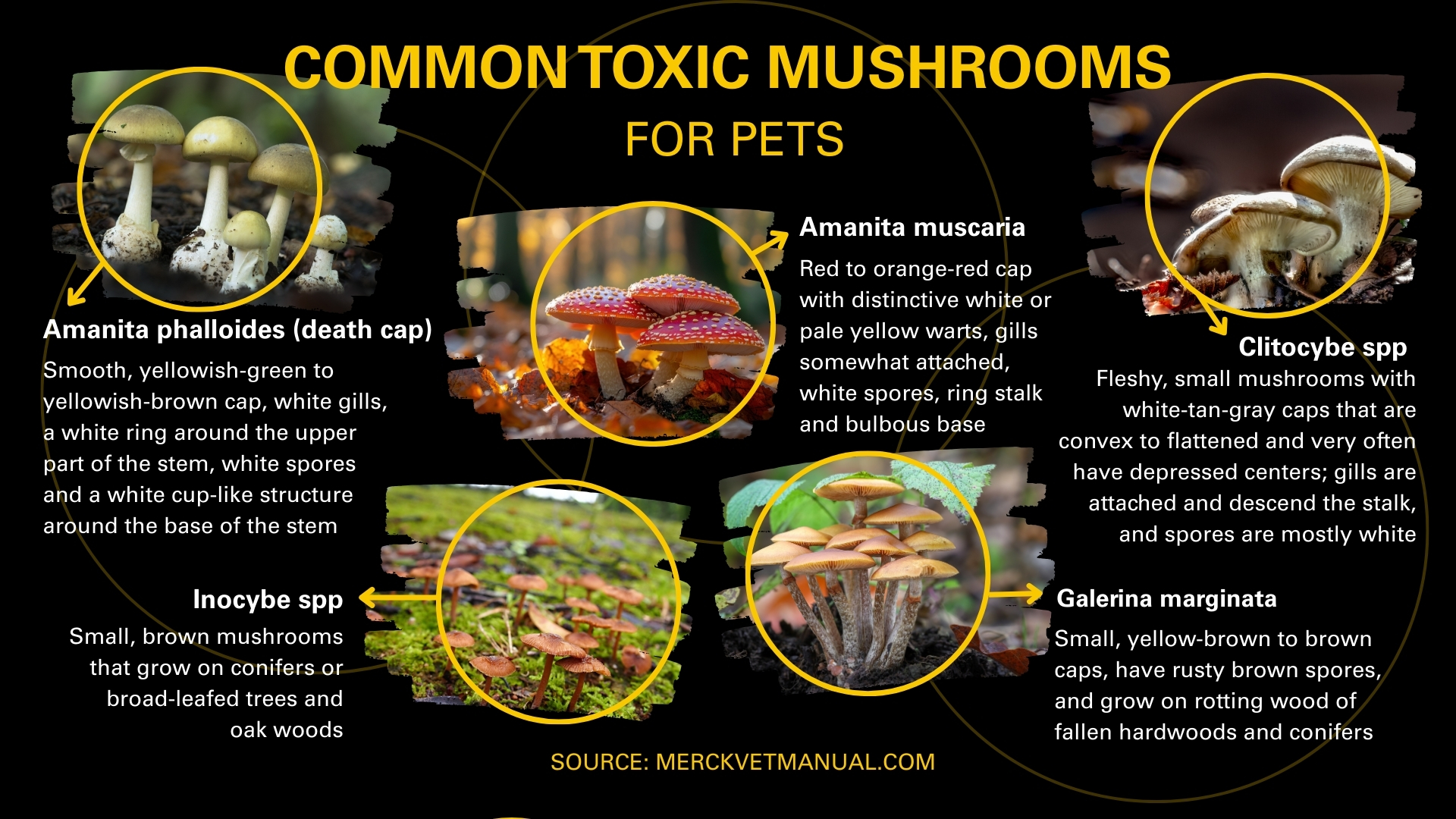An Unresponsive Pup and an Unprecedented Complication: NC State Gives Hope for Hollen
A German shorthaired pointer puppy’s traumatic brain injury and surrounding symptoms didn’t fluster NC State veterinarians, who tackled every hazard head-on.
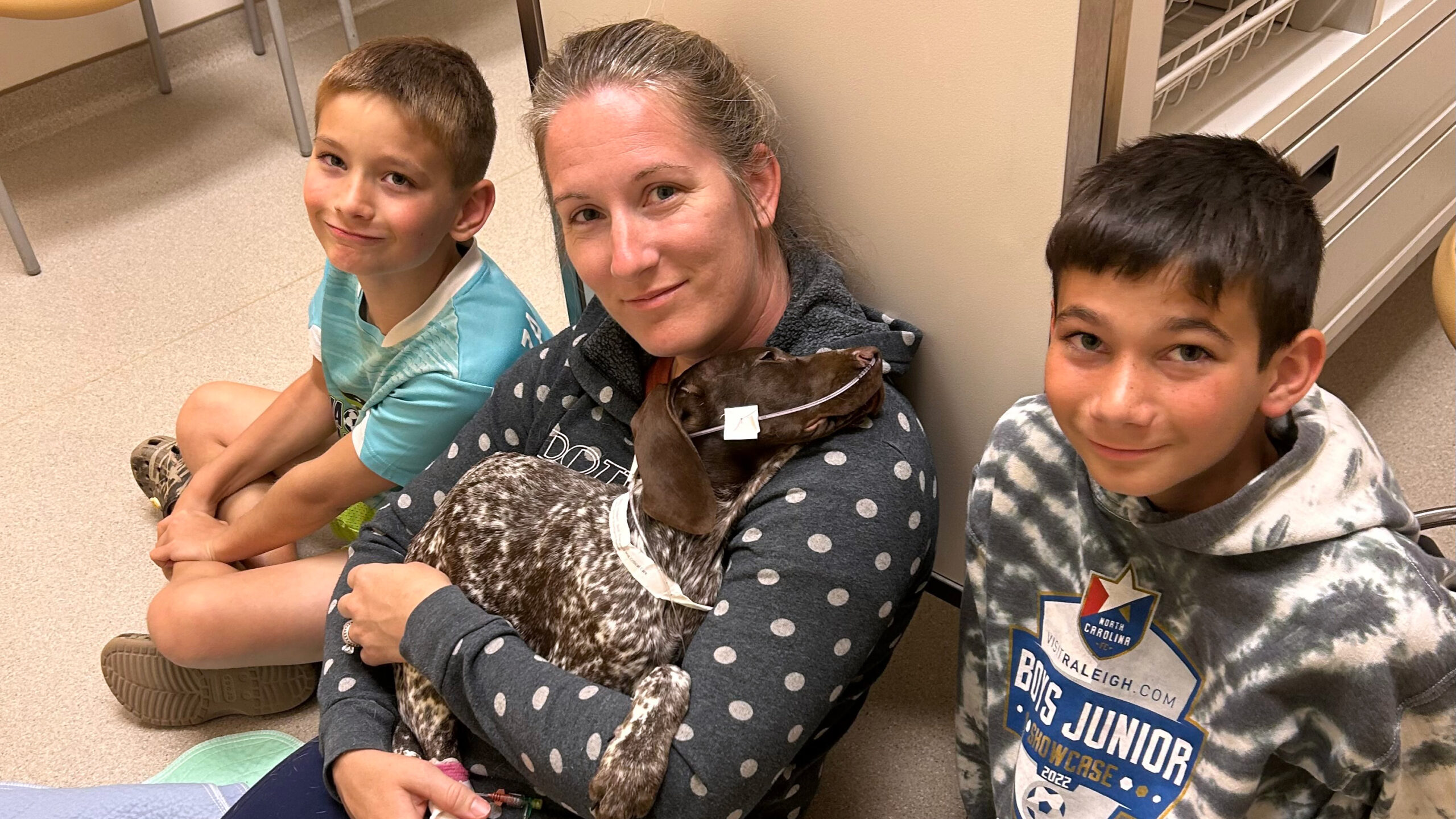
Hollen Tovar prances toward the waves of an Outer Banks beach on summer vacation, her spindly legs kicking up sand with eager puppy energy.
In the family’s video, her owners, Chelsea and Maurice Tovar, jog to keep up with the German shorthaired pointer, grinning as she pulls them along the shore. Just three months before, this picture-perfect scene would have seemed impossible to them as they rushed Hollen to their vet near Chesterfield, Virginia, after an encounter with another dog left her unresponsive.
Diagnosed with a traumatic brain injury, Hollen remained nearly comatose in two different animal hospitals before one referred her to the NC State Veterinary Hospital for intensive care.
In Raleigh, the veterinary staff recognized a life-threatening depressed skull fracture and performed brain surgery. When Hollen then developed a sodium syndrome so rare it apparently has no other documented cases in dogs, NC State again rose to the occasion.
The Tovars are so grateful for the hospital’s life-saving care that they are dedicating a brick to Hollen’s lead clinician on the College of Veterinary Medicine’s Walk of Honor.
“I was just blown away by NC State’s vet teams,” says Chelsea Tovar. “They see thousands of animals a year but still treated Hollen with such personal care, love and concern. We’d have trusted them to operate on one of us!”
The perfect dog’s perfect storm
It was love at first sight when 10-week-old Hollen joined the Tovar family in May.
“She’s so sweet, a total love, and she’s smart,” Chelsea Tovar says of the brown-and-white-speckled pup. “She’s really the perfect dog, behavior-wise: wonderful with our kids, great with our other pointer. She’s calm in the car, playful, curious — everything you would want in a dog.”
But within a day of Hollen’s arrival, disaster struck.
The Tovars didn’t see what happened that May 24 afternoon, but they heard their two young sons screaming, saw Hollen unconscious and pieced together that their German shepherd had bitten her head.
Their local veterinarian gave her medicine to reduce brain swelling but referred her to an urgent care facility. The neurologist there recommended surgery when a CT scan showed a skull fracture pressing on Hollen’s brain, but the urgent care was closing for Memorial Day weekend and Hollen needed treatment ASAP.
“They said, ‘We can start calling places if you want, but the best place for her really is NC State,’” Chelsea Tovar says.
“And we said, ‘Tell them we’re coming,’” adds Maurice Tovar. “We loaded up the car and told our kids, ‘There are no stops.’”
NC State vet techs met them at the door with a stretcher.
Neurology resident Dr. Gilad Fefer had already reviewed Hollen’s chart and realized her unresponsiveness suggested damage to a deeper part of her brain. He immediately ordered an MRI to look for brain damage or bleeding that couldn’t be seen on a CT.
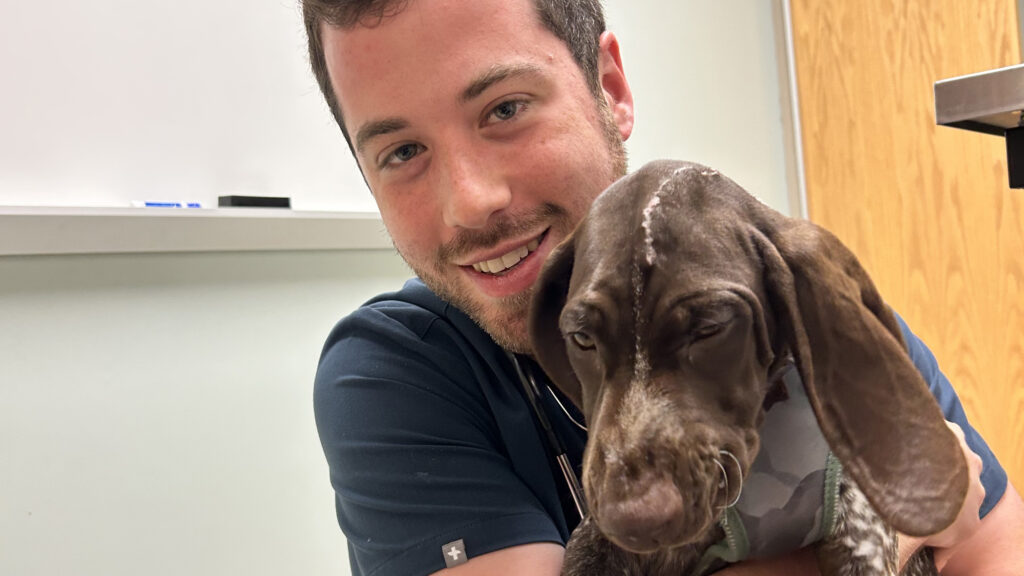
“The MRI showed the obvious piece of bone that was well-embedded within the tissue of her forebrain, but Hollen also had a pretty big bleed, or a stroke, secondary to trauma within her midbrain,” says Fefer, the primary veterinarian in Hollen’s case. “That bleed likely explained her severely abnormal mentation.”
The midbrain is responsible for the body’s sleep-wake cycle and is a difficult and high-risk area for surgeons to access, Fefer says. Doctors wanted Hollen to show signs of recovery from her stroke, proving her midbrain was healing on its own, before operating on her forebrain.
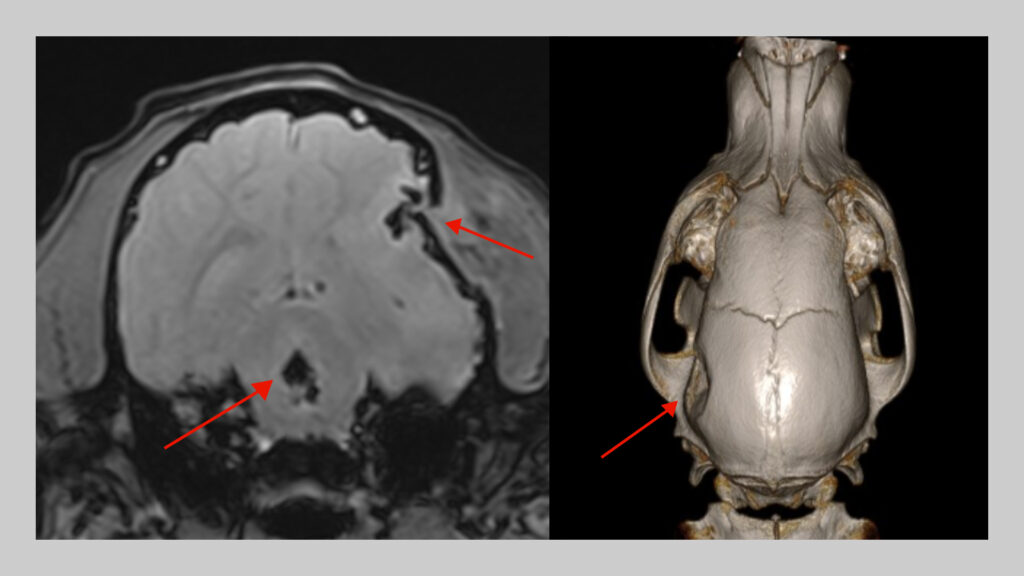
So Hollen’s care team waited. ICU technician Jamie Walls says she was guarded about Hollen’s prognosis at first, but the pup surprised her.
“By the second day, she was kicking and eating a little slurry of food,” she says. “Hollen was already making progress and showing that she was going to be a little fighter.”
And 36 hours after her arrival, Hollen started responding to voices and touch and was cleared for a craniotomy.
A unique complication
On May 28, Dr. Fefer and the surgery team removed a roughly 1-by-2 inch bone fragment wedged under Hollen’s skull, instantly relieving pressure on her brain, and flushed out bone chips and potential bacteria.
Hollen began reacting to stimuli in the ICU just two days later.
“One of the first things she did was smell food, and she just instinctively started licking,” Fefer says. “That was the first sign of, ‘There’s a puppy still in there.’ It was really amazing to see her go from not responding to anything to trying to stand, rolling around in her cage and trying to do puppy things within a week.”
Shortly after surgery, a complication emerged. No matter how much Hollen ate or drank, she remained dehydrated with dangerously low sodium levels, Fefer says, suggesting a condition known in humans as cerebral salt wasting syndrome.
“We suspected that she’d been excreting excess sodium in her urine,” he says. “And this is something that’s reported in people with traumatic brain injuries and described in veterinary textbooks as a potential complication, but it has not actually been described in a dog before.”
The ICU team responded by giving Hollen IV infusions of concentrated saline. Wanting to get the pup home, they needed to come up with a salt replacement method her family could continue until her levels stabilized.
Emergency and critical care veterinarian Dr. Bernie Hansen devised a plan to administer sodium through Hollen’s nasogastric feeding tube, then have Hollen’s family add a salt solution to her food once she could chew.
“I was fascinated to see such a rare syndrome firsthand,” Hansen says. “Most animals initially suspected to have cerebral salt wasting syndrome don’t actually have it. I’ve never had a convincing case before in three decades of practice.”
Hollen was released June 7 with detailed instructions for her continued care. Chelsea Tovar says it was like being sent home with a new baby.
“We kept Hollen in a soft-sided playpen right next to our bed, with a camera attached,” she says. “We came up with a routine: Every four hours, she was taken out to go to the bathroom and fed. We made this ridiculously detailed Excel spreadsheet to track her medications and bathroom breaks.”
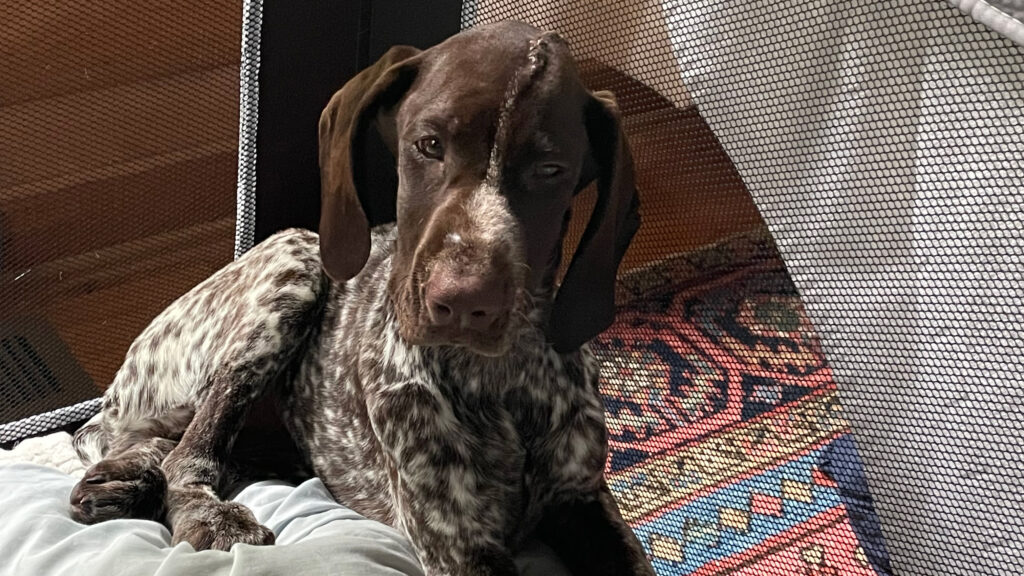
Hollen’s healing had other challenges. She was blind for weeks after her surgery and developed a sizable seroma, or fluid build-up, under her incision. She was prescribed an anticonvulsant after having a seizure at the hospital and needed weekly sodium blood tests at her regular vet.
But as Hollen grew stronger and recovered her vision and mobility, nothing could hold her back.
Maurice Tovar once found her wandering the bedroom after she clambered out of her playpen. After recovering more vision, Hollen later took off running across the yard during a potty break, and Chelsea Tovar had to chase her down in a bathrobe.
Now, 6-month-old Hollen enjoys a pampered life with plenty of attention from her humans and the family’s other pointer pup, Jack. The Tovars rehomed their German shepherd with a relative.
“Hollen is going to be her own spokesperson,” Chelsea Tovar says. “We’re going to let her be the guide as to what and how much she wants to do.”
‘Everything that could go right did’
The Tovars say the NC State Veterinary Hospital helped turn a harrowing experience into an uplifting one. Hospital staff even connected them to a grant that offset Hollen’s surgery costs.
“I feel so fortunate and grateful to the vet hospital and Dr. Fefer, and so lucky that Hollen’s with us and that we were able to receive that grant,” Chelsea Tovar says. “Things have a crazy way of working out, and as awful as it was, everything that could go right did — and I don’t believe it would have turned out this way had she been elsewhere.”
Maurice Tovar shares Hollen’s story with everyone who asks about his NC State CVM T-shirt.
“When I’m out in public, people will be like, ‘Hey, did you go there?’ And I’m like, ‘Nope, but my dog did!’” he says. “I tell them, ‘If your pet needs specialized care, go to NC State.’”
Fefer took Hollen back to the ICU during her recheck in June so everyone could see her progress. Walls said she was delighted to witness her come full-circle.
“I saw Hollen at her worst and at her best,” she says. “Being able to see the extensive work and time we invest in our patients have such a great outcome is so gratifying.”
Fefer says Hollen’s recovery demonstrates the life-changing results of collaboration between hospital teams, pet owners and referring veterinarians.
“It’s amazing to see what animals can bounce back from and how much of an impact we make for families like the Tovars,” he says.
And soon, an engraved brick along the path into the CVM will celebrate Fefer and team’s efforts for years to come:
HONORING DR. FEFER
YOU SAVED ME!
LOVE, HOLLEN TOVAR
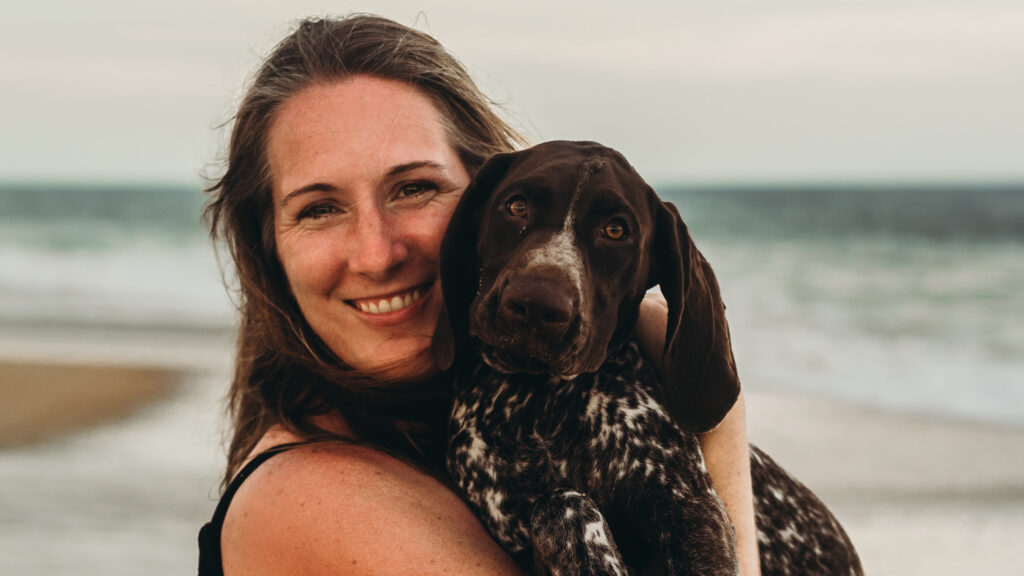
- Categories:

